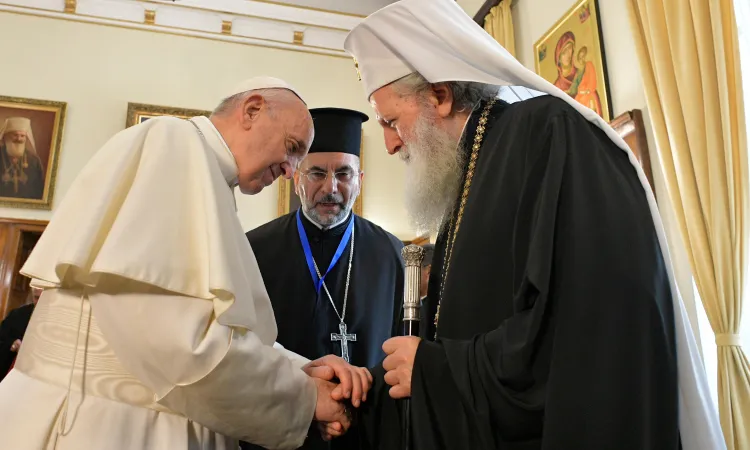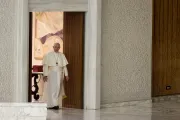Despite these difficulties, Pope Francis preferred highlighting what unites.
Pope Francis pivoted his speech at the Synod of the Bulgarian Orthodox Church on the ecumenism of blood, that is the persecution that both Catholic and Orthodox endured in Bulgaria during the Communist regime.
Then, Pope Francis focused on the traditional visit of the Bulgarian delegation to the Vatican on the occasion of the feast of St. Cyrill and Methodius, that is celebrated on May 24 according to the Gregorian calendar.
The visit has been taking part for 50 years now. For 33 years now, the Bulgarian delegation is joined by the North Macedonian delegation. The event unites the two countries Pope Francis is visiting.
More in A Vatican Observer
Pope Francis used the meeting to explain the possibilities of an encounter even when dialogue might be difficult. It is difficult between Catholic and Orthodox, but it is complicated also within the Orthodoxy.
Tracing back all the issues of the fragmented Orthodox world is complicated.
In North Macedonia, there is an autocephalous Church, the Macedonian Orthodox Church. The Macedonian Orthodox Church was established in 1967 but it is not recognized by Orthodox communion, and it is considered schismatic. The Patriarchate of Serbia claims the Macedonian territory as its canonical territory.
Recently, the Macedonian Orthodox Church became a path to recognize the Bulgarian Orthodox Church as its mother Church, to be finally acknowledged in the Orthodox world.
The Holy See never said a word on the issues of the autocephaly, which an internal Orthodox point. At the same time, the Holy See always kept relations with the Macedonian Orthodox Church.
Archbishop Stefan, head of the Macedonian Orthodox Church, noted with CNA that "the Vatican always showed great sympathy toward the Macedonian Orthodox Church, and many professors in the educational institutions of our Church were formed in the Holy See institutions in Rome."
The Macedonian Orthodox Church self-proclaimed its autonomy at the end of a compound path. The Archbishopry of Ochrid was established n 971. In 1767, the Ottoman Empire abolished the Archbishopry and put it under the jurisdiction of the Ecumenical Patriarchate of Constantinople.
(Column continues below)
Subscribe to our daily newsletter
After that, Macedonian referred for a while to the Bulgarian Orthodox Church, and then in 1920, the territory passed under the jurisdiction of the Serbian Orthodox Church following the establishment of the Serbian, Croatian and Slovenian kingdom.
Despite the friendship ties, the Holy See has always been prudent about the issues of the Macedonian Orthodox Church. She did not get into the autocephaly issue but kept connections saving some necessary formality.
Pope Francis and Archbishop Stefan do not entertain the usual meetings between two religious heads, but they have meetings. For example, Archbishop Stefan is always part of the national delegation that visits the Vatican for the St. Cyrill and Methodius feast.
This is the general framework that led the Macedonian Orthodox Church to appeal to the Bulgarian Orthodox Church. This framework is also on the background of this Papal trip. Everything, in the end, is connected, as every national Orthodox Church presents some autonomy claims.
Pope Francis faces these issues with an ecumenism based on common challenges. Pope Francis' has a pragmatic approach to ecumenism, which already proved to work in some circumstances.
Bishop Hristo Proykov, apostolic exarch of Sofia and president of the Bulgarian Bishops Conference, recounted that orthodox and Catholics worked well together in Bulgaria when they lobbied to stop a pro-abortion law in the Parliament.



